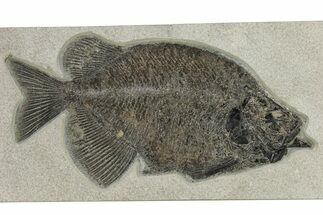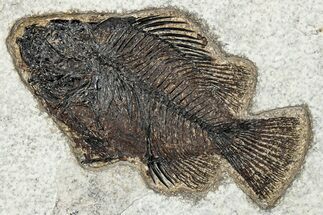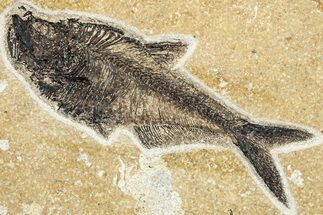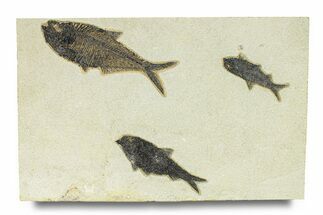This Specimen has been sold.
4" Eocene Prickly Hornwort (Ceratophyllum) Fossil - Wyoming
This is a beautifully preserved, 4" wide fossil of Ceratophyllum muricatum, commonly referred to as prickly hornwort, collected from the Eocene-aged Green River Formation at the Lindgren quarry in Kemmerer, Wyoming. It's in great shape with fine detail and a light-brown preservation.
This specimen includes an acrylic display stand.
This specimen includes an acrylic display stand.
50 million years ago, in the Eocene, these fish thrived in Fossil Lake, which was fed by the Uinta and Rocky Mountain highlands. The anoxic conditions at the bottom of Fossil Lake slowed bacterial decomposition, prevented scavengers from disturbing corpses and, most interestingly, suffocated creatures that ventured into the oxygen-starved aquatic layer. The result is a miraculous exhibition of Eocene biota: a subtropical aquatic community within sycamore forests, teeming with creatures such as freshwater stingrays, dog-sized horses, menacing alligators, early flying bats, and one of the first primates.
SPECIES
Ceratophyllum muricatum
LOCATION
Lindgren Quarry, Kemmerer, Wyoming
FORMATION
Green River Formation, "Gastropod Layer"
SIZE
Plant: 4" wide, Shale: 5.8 x 4.4"
CATEGORY
SUB CATEGORY
ITEM
#257032
We guarantee the authenticity of all of our
specimens. Read more about our
Authenticity Guarantee.
specimens. Read more about our
Authenticity Guarantee.
 Reviews
Reviews












